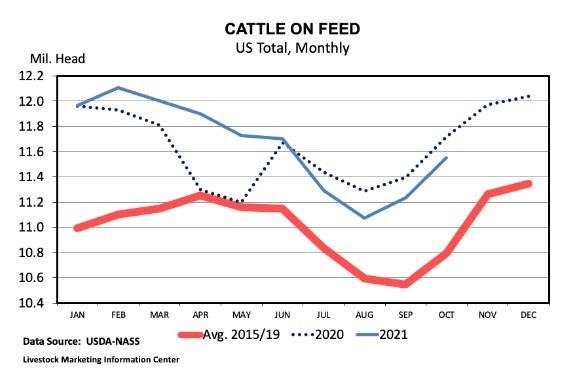By James Mitchell
USDA released the October Cattle on Feed report on Friday, October 22nd. The October 1st estimate for cattle on feed inventories for feedlots with a capacity of 1,000 head or more totaled 11.6 million, a 1.4 percent decline from last year. This month’s report is the fourth consecutive month with cattle on feed inventories below 2020. However, feedlot inventories remain 2.3 percent above 2019 levels. Overall, the feedlot situation continues to improve, albeit slower than many of us might have predicted earlier this year.

The placement data continues to provide critical insights for our fall calf market and future beef production. September feedlot placements totaled 2.163 million, a 2.9 percent decline from last year. Regionally, compared to 2020, September placements were 11 percent higher in Iowa, 3 percent higher in Kansas, 10 percent higher in Oklahoma, 10 percent lower in Colorado, and 9 percent lower in Nebraska. September placements in Texas and Minnesota were comparable to 2020. Three factors are contributing to the year-over-year decline in feedlot placements for September.